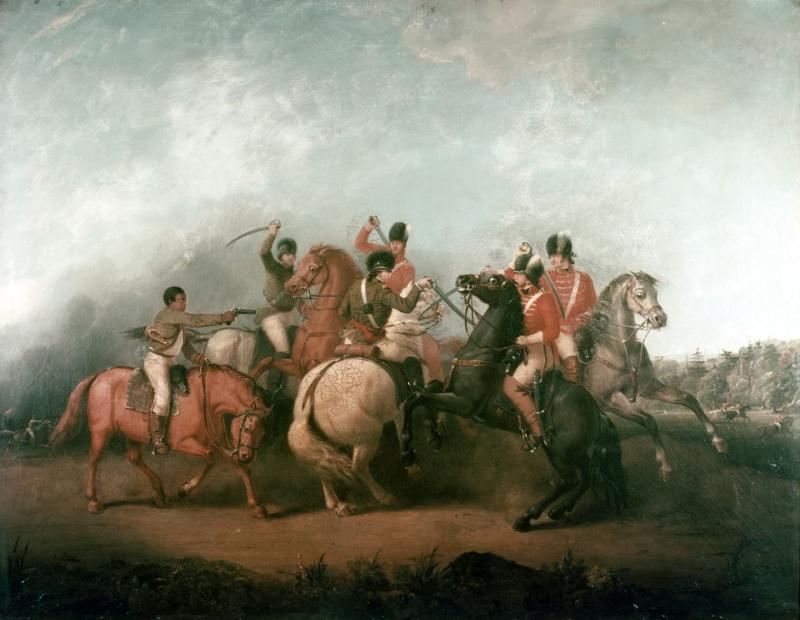Five Best: Books on the American Revolution
By: John Ferling (WSJ)



Paul Revere’s Ride
By David Hackett Fischer (1994)
1. David Hackett Fischer relates countless fascinating details about Paul Revere's harrowing midnight ride to warn that "the regulars are coming out," but his book concerns far more. Revere had been dispatched when it was learned that the British army was sending a force to destroy the colonists' arsenal in Concord, Mass., and his alert would cost the Redcoats the vital element of surprise. Blood flowed in Lexington, Concord and along Battle Road throughout the British army's nightmarish tramp back to Boston on April 19, 1775. That made it a "fine day," in the view of Samuel Adams. Members of the colonial resistance had long been prepared to fight for their freedom. Britain's use of force outraged most colonists, who, like George Washington, felt that "a brother's sword has been sheathed in a brother's breast." Nor was it solely the colonists' sense of betrayal that made this a pivotal day. Had the militiamen met with a crushing blow, the will to resist Britain's professional army might have vanished throughout America. The outcome was not only a disaster for the British government; it bolstered the colonists' belief in the power of armed resistance.
The War for America, 1775-1783
By Piers Mackesy (1964)
2. Principally, this is a study of the making and execution of British strategy in the only war Britain lost in a 150-year string of Anglo-French conflicts. Piers Mackesy focuses on Britain's ministers, who were responsible for the army and navy, and on their two commanders in chief in the American theater after 1776. The choice for war, Mackesy contends, was an imperial dream of power undertaken to prevent France from profiting from American independence. Britain's leaders never thought America could be conquered, but they believed that a defeat of the Continental Army, combined with America's own war weariness, would lead to victory. Britain's army failed, first, due to what Mackesy describes as the confusion of Gen. William Howe and later the passivity of Gen. Henry Clinton. But above all, Mackesy contends, London lost primarily because "for the first time England faced what she had never before faced: a world war in which it was unable to maintain maritime supremacy."
The Men Who Lost America
By Andrew Jackson O'Shaughnessy (2013)
3. Andrew Jackson O’Shaughnessy’s subjects are the 10 “key British decisionmakers who oversaw the conduct of the war for America.” Each made mistakes, but Mr. O’Shaughnessy scapegoats none for Britain’s loss of America. The generals and admirals were “seasoned veterans” and the ablest officers available for command in America. Mr. O’Shaughnessy finds that the British war effort was so plagued by fundamental problems that victory would have been elusive regardless of the cast of characters. Britain’s primitive administrative system was ill-equipped for waging a world war or for overcoming debilitating logistical obstacles. Severe shortages of men, horses and provisions frequently tied the hands of the generals. The navy lacked the resources to simultaneously support land operations and mount an effective blockade. Britain also faced a well-led adversary backed by a population that strongly supported the revolutionary cause. Because Britain was a world-class power, many contemporaries and historians concluded that its failure could only have been due to poor leadership. Mr. O’Shaughnessy disagrees. Through his emphasis on the deeper causes of Britain’s military catastrophe, he has rehabilitated the reputations of a collection of much-maligned leaders.
A Devil of a WhippingBy Lawrence E. Babits (1998)
4. The Battle of Cowpens, fought in South Carolina on Jan. 17, 1781, is overshadowed by other clashes in the Revolutionary War, many of less importance. But Lawrence Babits argues that Cowpens, an engagement between two small armies that lasted less than 40 minutes, was in fact a turning point. Not only was it crucial in restoring America’s sagging morale, but its impact on the British army was immense. No battle in this war featured more colorful commanders. Banastre Tarleton, the 26-year-old former law student who commanded the British Legion, was the most feared and hated enemy leader in the southern theater. Daniel Morgan may well have been the Continental Army’s best leader of men. Like most of his soldiers, he came from a hardscrabble background and knew how to motivate his troops. Cowpens, Mr. Babits argues, was Morgan’s “tactical masterpiece.” The book reveals the gore, valor and savagery of a battle that cost Tarleton close to 90% of his men and ended with the British commander running for his life. Cowpens, Mr. Babits concludes, ushered in a new phase in the war—one that ended nine months later in the even greater British disaster at Yorktown.
The War of American Independence
By Don Higginbotham (1971)
5. Bullets fly in the key battles, but Don Higginbotham’s work is no less focused on America’s home front, its forlorn economy and the condition of the nation’s enemies. The Royal Navy, crippled by deficit hawks, was fatally ill equipped. Leadership in Britain’s army was the preserve of the aristocracy, which closed the door to a wider selection of military talent. On the American side, Congress was slow to approve a standing army. When it was finally created, John Adams described it as being made up of “the meanest, idlest, most intemperate and worthless” men. Still, Higginbotham maintains that the republican army remained “remarkably loyal to the civil authority and to the goals of the Revolution.” America won its independence thanks to Washington’s leadership, a capable Continental Army, the indispensable state militias, and above all French assistance. Britain’s failures were also no small help.




